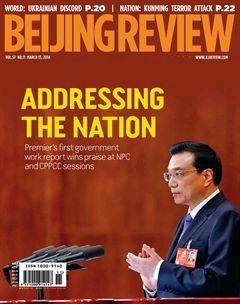Dancing for Youth
When the Sochi Olympic flame goes out, where will the world next turn its focus? Nanjing in China!
The Second Summer Youth Olympic Games (YOG) will be held in Nanjing on August 16-28, 2014. Nanjing will surprise the world in its own ways!
On February 10, 2010, the 122nd IOC session at Vancouver announced Nanjing as the host city of the Second Summer YOG. From that day onward, Nanjing has entered “YOG time.” The YOG is not a “mini” Olympic Games, but an event for athletes aged 14-18 and focuses more on the integration of culture, education and sport as well as the sustainable development of the Olympic movement. As the saying goes, “one YOG can inspire three generations of people.” The YOG is of great significance to young people around the globe. During the 13-day event, young athletes from countries worldwide will take part in events in 28 sports as well as cultural and education programs with the themes of Youth Festival, Boost Your Skills, World Culture Village, Discover Nanjing and New Media Practice. Through these activities, participants can better understand the Olympic spirit of mutual understanding, friendship and sportsmanship.
The YOG opens a new and wonderful era for Nanjing, and allows the city to demonstrate its slogan of Share the Games, Share our Dreams. The event offers also opportunities for prospective travelers to partake in many of the beautiful citys delights.
Explore a culture over 1,000 years old. In traditional Chinese culture, the south gate of a city is the gate used to welcome guests. The south gate of Nanjing is called Zhonghua Gate. Standing on this gate, you can not only appreciate the view of the worlds No.1 barbican, but also see the ruins of Yuecheng Town across the river where Nanjing was established 2,480 years ago.
Along the mother river of the city—Qinhuai River—is the Stone City in the northwest of Nanjing, built in the Eastern Wu Dynasty (222-280), when the citys 450-year reign as the countrys capital began. Nanjing was once called Stone City, a nickname which illustrated the citys features. Today, there are still 21 km of the City Wall in Nanjing, built in the Ming Dynasty(1368-1644).
The Qinhuai River then runs west from here and meets the worlds third longest river—the Yangtze River. Near the estuary are the ruins of Longjiangbao shipyard. This is where the fleet of Zheng He, who made seven voyages to the Western ocean from 1405 to 1433, was built. In a workshop near the shipyard, a full-size model of Zhengs boat will be finished soon. In the near future, this boat, the biggest wood boat in the world at present, will make the “eighth voyage to the Western ocean.”endprint
Nanjing also has a lot of museums, with two of hem that you must visit. The first is the Jiangning mperial Silk Manufacturing Museum. This is also he home of Cao Xueqin, the author of Dream of he Red Chamber, one of Chinas greatest classial novels, and the setting where many events in he novel happened. In this museum, visitors can lso get to know the history and development of Nanjings brocade, which has been inscribed on the UNESCO World Intangible Cultural Heritage list. The ther one is the China Modern History Museum, r the Presidential Palace. This is where Sun Yat-sen was sworn in as the provisional President of the Republic of China, the first modern regime of Asia.
Immerse yourself in a green environment. There are three places from which travelers can enjoy the best views of Nanjing: On the City Wall, you can see views blending mountain, river, city and forest; on top of the Purple Mountain and Zifeng Tower, you can see rivers, lakes and springs. The clearest and most eyecatching thing is the Xuanwu Lake Park. The lake comprises of five small islands, each of which is considered to represent one of the five continents of the world.
Walking in the streets of Nanjing, you cannot help but be allured by the phoenix trees that line the streets. Each phoenix tree is like a huge umbrella that can provide shelter from rain and offer coolness and shade in summer. Therefore, under the phoenix trees are ideal places for seniors and children to rest and play. If you like outdoor activities, you can come to the Laoshan Mountain National Forest Park in the morning, where you can breathe the freshest air. Go to the Confucius Temple in the evening and take a painted boat, from which you can see the night views of the Qinhuai River and enjoy the charm of Nanjing, discovering for yourself just why it has been voted Best Livable City and International Garden City.
Revel in the vigor of youth.Nanjing is a city of youth. Among the 8.16 million people in Nanjing, one out of every 10 is an undergraduate or a postgraduate.
The city is run at the tempo of the new generation. In Nanjing, you may take a bus with Wi-Fi coverage and use WeChat or Weibo on it; you may come across with some young people running in a city park and run with them; and when you get lost, you can ask volunteers everywhere in the city for the way.
As the only city in China to have piloted comprehensive reform of its science and technology system, Nanjing is building 21 Zijin technology incubation special parks so that the public can easily become familiar with the policies for scientific innovation and business start-up.
Entering its “YOG time,” Nanjing is becoming younger and more vigorous, like a dancer doing the waltz in red shoes.
Welcome to Nanjing for the Youth Olympic Games in 2014!endprint

